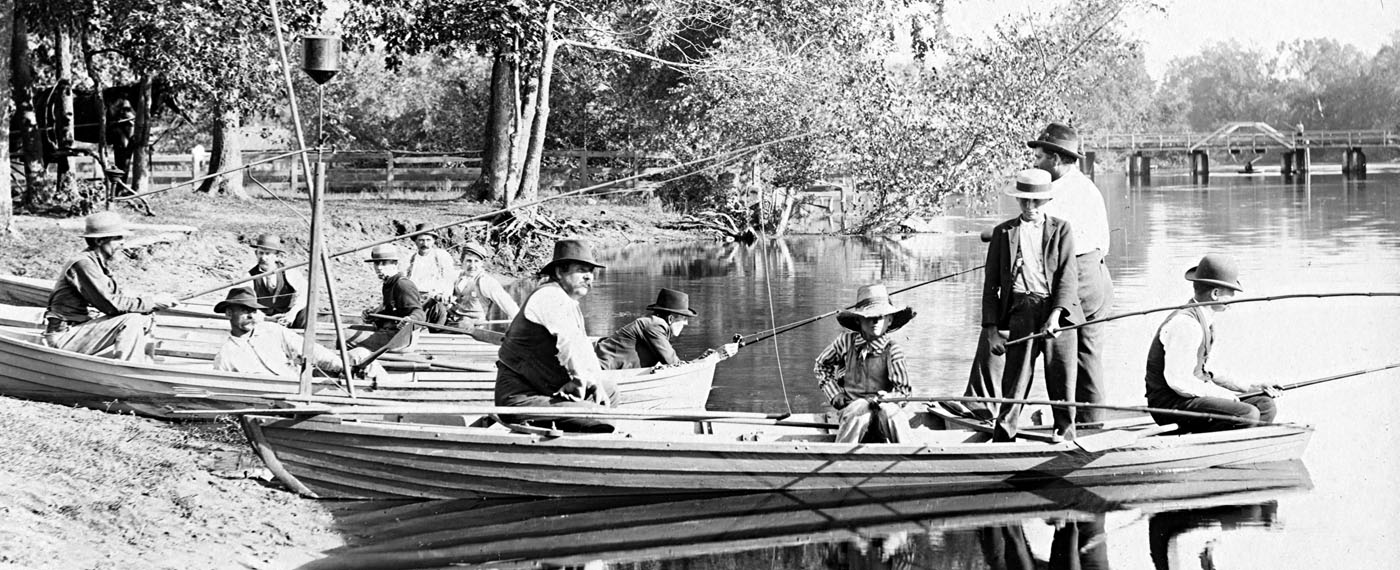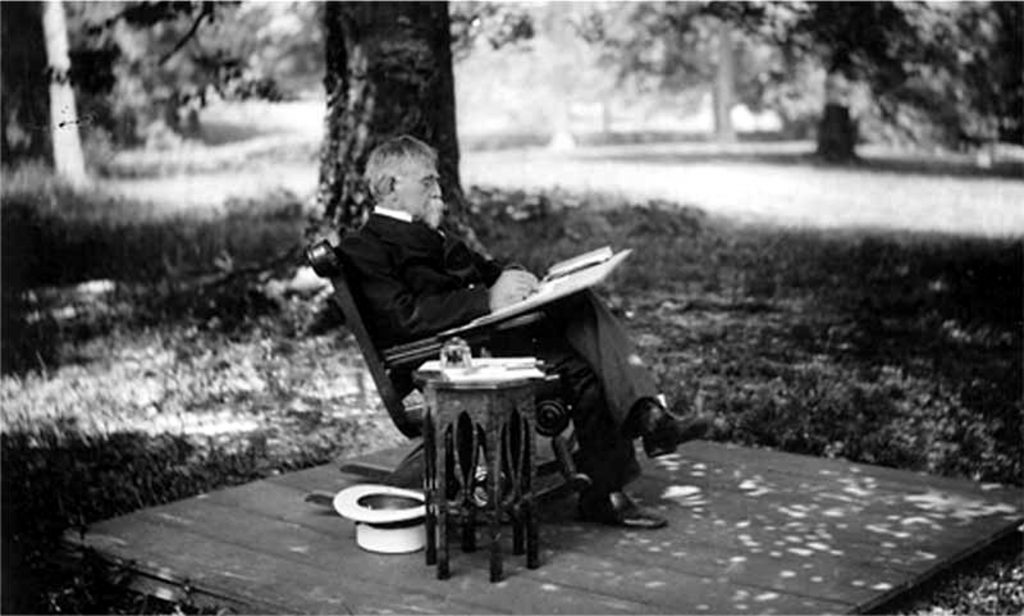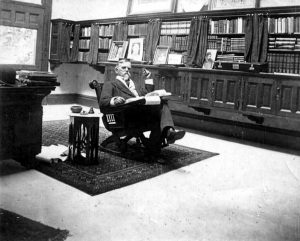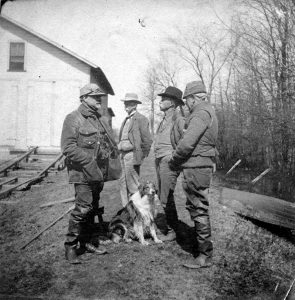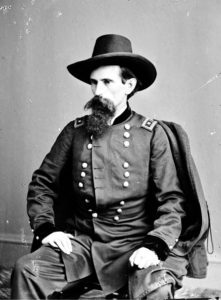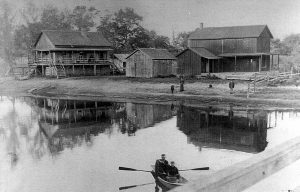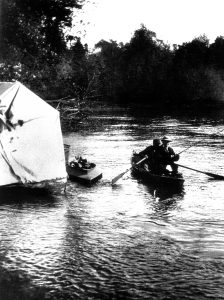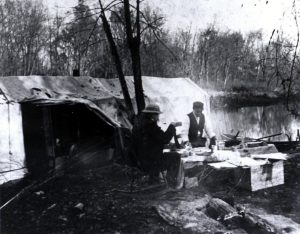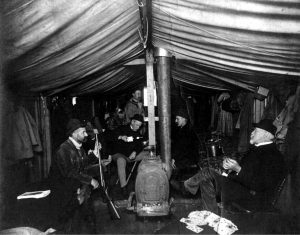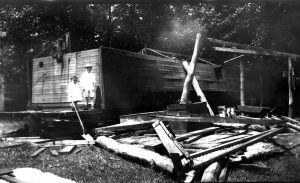Porter County is Part of Gen. Lew Wallace Story
By: William Wallace The Stroller
The story of Gen. Lew Wallace is again attracting nation-wide attention since the new picture of “Ben-Hur” is sweeping the county.
At Crawfordsville the Ben-Hur Museum at the Lew Wallace studio is attracting more visitors than ever before.
Porter County is a part of that story, for the General maintained a vacation site and a houseboat on the Kankakee for 43 years.
He first came here when he was a state senator in 1858. He and Samuel Wilson, his law partner, and two or three prominent politicians came from Indianapolis on a duck hunting trip—and to have a secret conference about Indiana politics.
Lt. Wallace, then 36 years old, had been elected to the senate by the Democratic party, but as the slave issue developed, he was entirely out of sympathy with Douglas, and wanted to switch to the Republican party, then only four years old.
Never bound by strict political ties, he had become convinced that Lincoln was the proper man for President. It was this realignment of political interests that first brought him to the Kankakee.
Hunting Ducks was a secondary consideration, but the site, the vast swamp areas, and the charm of the whole region prompted him to determine upon establishing a permanent hunting cabin some place in the vicinity.
There was already an Indianapolis Gun Club, Terre Haute Hunting lodge, and a Rockville Sportsmen’s club there. Two years later he came again, bringing, according to his autobiography, a Heinmann Sportsmen’s tent. with canvas floor, his fishing outfit, a gun, and a small camp stove and cot.
He set his tent up beside a rough board shanty about 100 feet back from the river near Eaton’s Ferry and upon his departure he stored his outfit at Eaton’s
Then come the Civil War, when he was appointed Adjutant General for Indiana, and helped Gov. Morton get the Enlistment Machinery in operation. As soon as the state’s war program was well organized he resigned his position and, having been promoted to colonel, he took the 11th Indiana Infantry into the conflict.
His Crawfordsville company of Zouaves, called the Montgomery Guards. was a spectacular part of the Eleventh, and they attracted nation-wide attention for almost two years. The newspaper publicity and a number of illustrated articles in Harper’s Weekly, antagonized the West Point Clique in the army.
After the bottle of Shiloh, Wallace, then a major-general, war accused unjustly of having, been “slow and dilatory” in bringing his regiment to the rescue at Pittsburgh Landing. After a number of undercover manipulations, the West Pointers took the Eleventh piecemeal into distant fields, and soon Lew Wallace found himself without a regiment, and “was put on the shelf” pending the issuance of further orders.
It was jealous trickery, but it was effective. The idle major general came again to the Kankakee “to think things over” and let his friends at court get to President Lincoln and have him recalled to active service.
Rider From Valparaiso
For three weeks he hunted, fished, worried and hoped and then one day a rider from Valparaiso came tearing up to the ferry. His wife at Crawfordsville had telegraphed that “New orders are here. Return at once.”
Gov. Morton and President Lincoln were alarmed to know that in the heat of war small caliber jealousy had put a successful major general “on the shelf” and he was immediately promoted to general and sent to Cincinnati with a staff of 140 officers and 12.000 men to protect that city from impending raid.
From that day on until 1867 Lew Wallace was in the midst of war’s turmoil, and in the military courts that tried and sentenced the Lincoln conspirators, and tried and convicted Capt. Henry Wirz, the cruel and inhuman commandant of Andersonville Prison.
After the war activities were over Gen. Wallace built a new home for his wife and son at Crawfordsville, but between spurts of activity in law he found time to come often to the Kankakee.
Buys Area Land
He bought a 40-acre tract in Jasper County, and a 20 acre tract in Section 13 in Pleasant Township in Porter county. Later he bought Lot 6 in the Griffith Land company’s plat in section 26 where he intended building a permanent hunting cabin.
In Writing of Gen. Lew Wallace Hubert Skinner said: “During the 43 years or more from 1858 to 1903 that Gen. Wallace was a frequent vacation visitor along the Kankakee he was just an old friend coming back time after time. He knew everybody along the river, and everybody knew him.
“River rats, trappers, guides, pushers and just ordinary home folks accepted him for his friendliness and his interest In the Kankakee. They made no “hero” of him, because of his fame as author, soldier and statesman, and this was just to his liking. His close associates were wealthy sportsmen who came once or twice a year to hunt, especially Ira Brainard, Henry Wainright, and members of the Pittsburgh Gun club.
Hikes Over Trails
He hiked over all the Kankakee traits with only a dug for company and showed up casualty at George Wilcox’s Boarding house for supper, with the rest of the guests. No one treated anybody else as though they were celebrities along the Kankakee. They were all simply Kankakee enthusiasts, and that was enough.
“The General never built his cabin on lot 6, for about that lime a new lumber barge, built to haul lumber down the river, was found unsatisfactory after one trip, and he conceived the idea of buying it and converting it Into a sort of floating cabin. There have been many boats on the Kankakee, but none ever attracted more attention than the queer barge he devised.
He set up a framework of iron pipe and flanges and ordered from Chicago a great canvas square top tent to cover that frame. ‘The task of getting that canvas over the frame was a monumental labor and didn’t fit properly when it was on.
They took it off, changed the framework, and remade the cover. Mrs. William Morehouse cut out a number of windows in the side walls and put in mosquito bar coverings with the original canvas hemmed and fitted with cords to be used at night or in bad weather.
Later then detached the roof canvas from the sidewalls, so the walls could he rolled up like Cleopatra’s barges required. The barge was 10×37 feet and was divided into three ‘rooms’ of about equal size. One was a kitchen-Dining room and bunkhouse for the colored man who was the general’s cook amid man-of-all work; the middle section was a ‘sitting room’ and study; and the other end room was the general’s sleeping quarters.
“From all the neighbors,” said Mrs. Morehouse, “we gathered up unwanted tables, chairs and lumber for a bookcase. I’ve seen the general and Ira Brainard sawing and nailing and building ‘removable’ furniture in that canvas enclosure many a time. They were having a wonderful time.”
That fall another huge project was undertaken, the digging out of the high sandbank at Deep Bend beside the Pittsburgh Gun club house. The digging was to establish a negotiable slope to haul the barge up out of the water each fall and store it for the winter In a ‘dry dock’.
All the furniture was stored wherever anyone could find space in the gun club attic, in Wilcox’s wood-shed and In the old Eaton house – but that first year the house-boat, stripped of all its frame aid fixtures remained in the water. There weren’t enough teams and men and windlasses to haul the thing up.
That was the year A.P. Knott went over to a Chicago junk yard and bought some old iron rails and streetcar wheels, and a scrap iron for a “boat carriage and track” but that’s another story.

